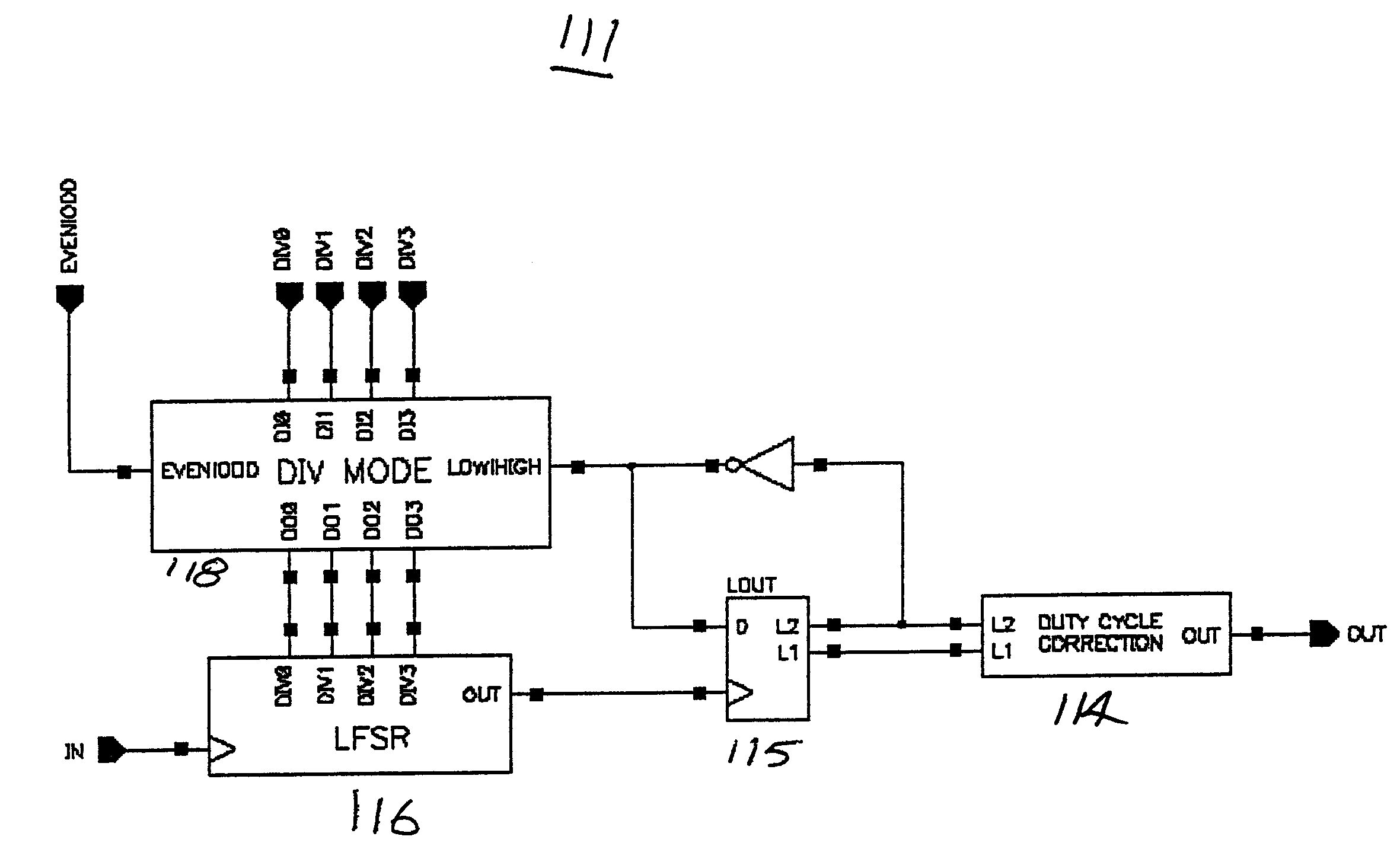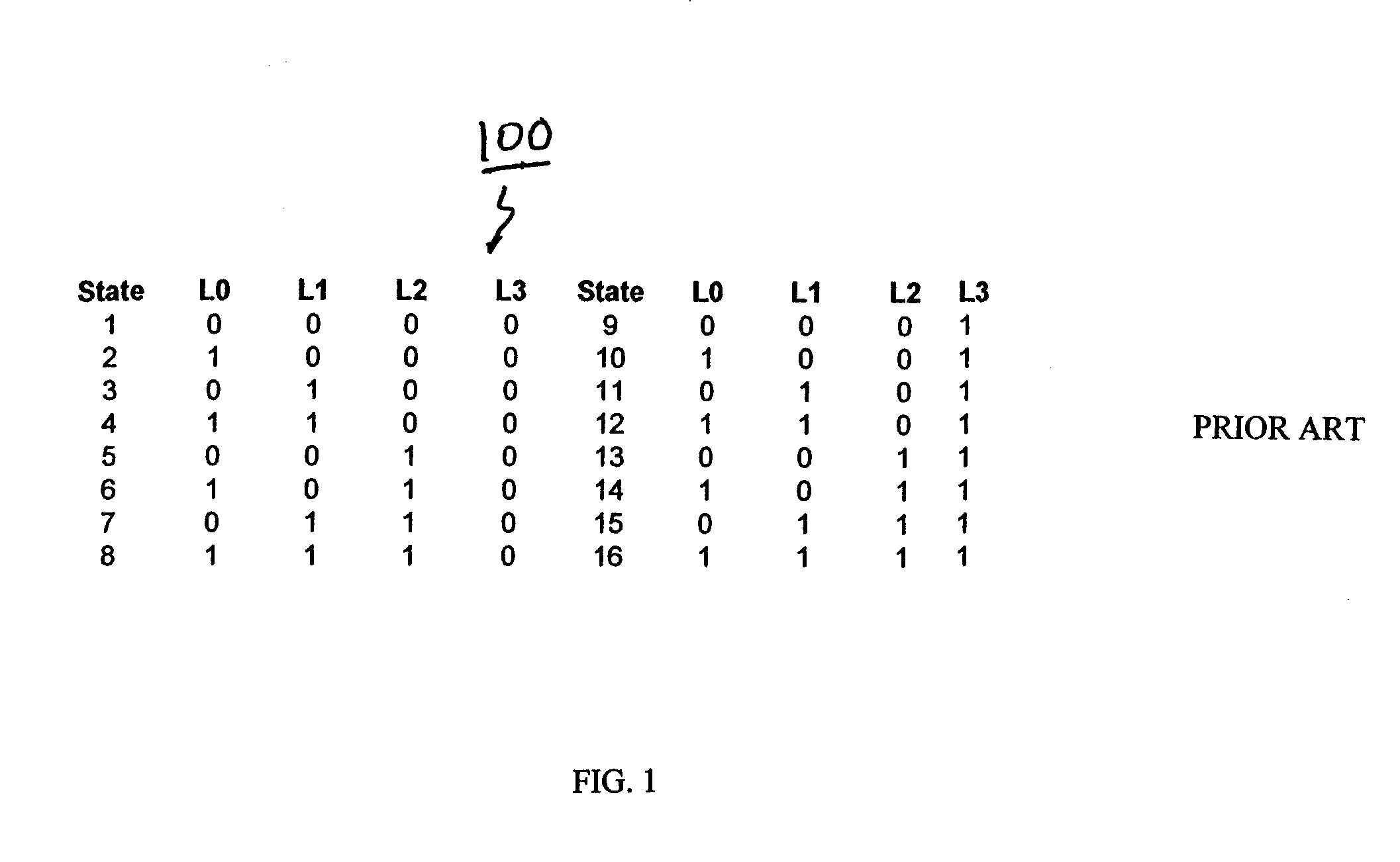Programmable frequency divider with symmetrical output
a frequency divider and symmetric output technology, applied in the field of integrated circuit frequency dividers, can solve the problems of less physical area and less power dissipation, and achieve the effects of overcoming inherent limitations in divide resolution, high divisor value, and flexible operation
- Summary
- Abstract
- Description
- Claims
- Application Information
AI Technical Summary
Benefits of technology
Problems solved by technology
Method used
Image
Examples
third embodiment
[0091]the LFSR based counter distributes a single XOR feedback network across multiple latches and therefore multiple clock cycles. The XOR element is segregated into multiple stages using standard logic gate primitives which improves latch-to-latch delay and therefore overall performance of the LFSR based counter. A four latch LFSR implementation with a single XOR feedback network is shown in FIG. 5.
[0092]FIG. 31 illustrates the technique of splitting the XOR function into a multi-stage function and distributing the logic across multiple latches. Initially, the output of the OR component 225 is fed back to the LFSR input latch L0 and the output of the NAND component 224 is fed back to latch LOB. During the next clock cycle, the outputs of latches L0 and L0B are passed through an AND gate 226 and the result is stored in Latch L1. As in the first LFSR embodiment, latch L0 will occasionally contain a known “false” value that will be corrected when this value shifts to latch L1. FIG. 3...
fourth embodiment
[0093]the high speed LFSR component of the frequency divider of the present invention combines two of the previous techniques. FIG. 33 shows a seven latch LFSR based counter coupled in parallel with a divide-by-two element and a segregated single XOR feedback network. The total number of states was reduced from 255 to 254, but the performance was improved by implementing the feedback network with a single XOR function decomposed into its component functions, which, in turn, necessitated an additional latch L0B. The final counter design has a maximum number of states that is one less than a standard eight latch design (254 versus 255) but offers a substantial improvement in performance.
fifth embodiment
[0094]the high speed LFSR counter of the frequency divider, shown in FIG. 34, adds an additional programmability feature by providing a multiplexed input to each of the LFSR latches. The LFSR counter latches can be initialized to specific values via a latch RESET input. Another latch 250 is added to control the gates of the multiplexer circuits used for programming the maximum state count.
[0095]The techniques discussed herein are not limited to a particular LFSR or symmetrical divider implementations or a specific number of dividers in parallel, but may be extended to designs with dividers of virtually any size and number with modifications that are simply a natural extension of the underlying principles.
PUM
 Login to View More
Login to View More Abstract
Description
Claims
Application Information
 Login to View More
Login to View More - R&D
- Intellectual Property
- Life Sciences
- Materials
- Tech Scout
- Unparalleled Data Quality
- Higher Quality Content
- 60% Fewer Hallucinations
Browse by: Latest US Patents, China's latest patents, Technical Efficacy Thesaurus, Application Domain, Technology Topic, Popular Technical Reports.
© 2025 PatSnap. All rights reserved.Legal|Privacy policy|Modern Slavery Act Transparency Statement|Sitemap|About US| Contact US: help@patsnap.com



